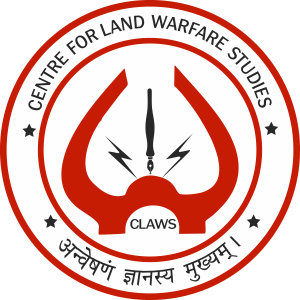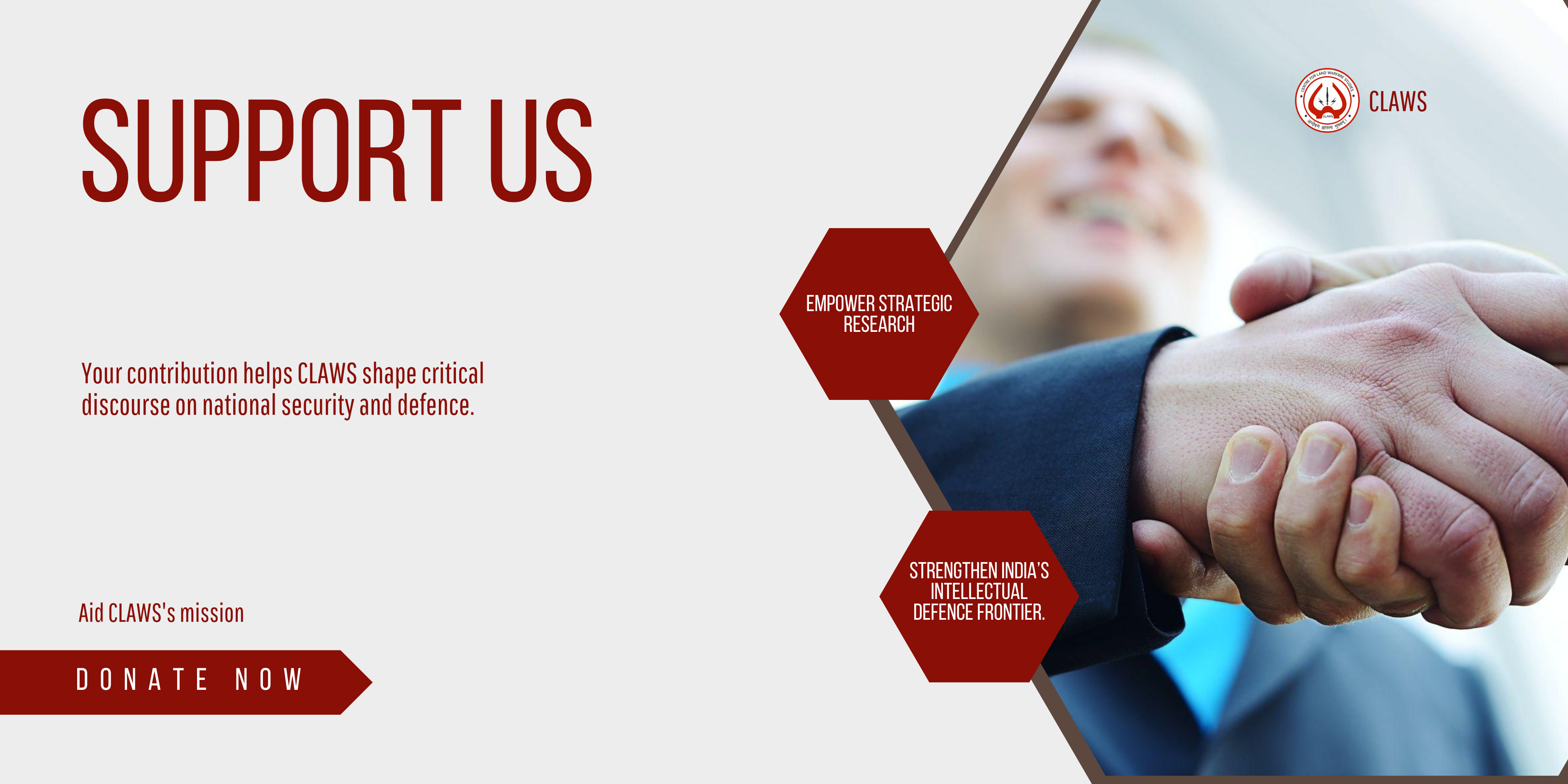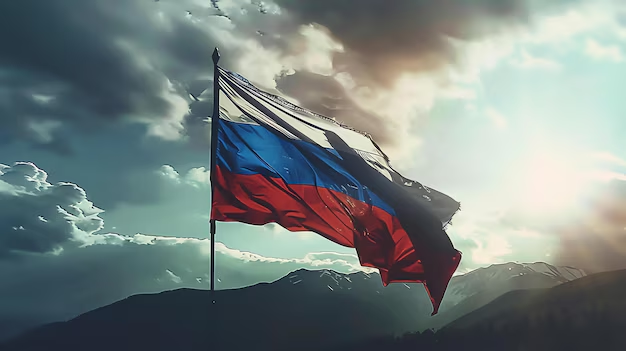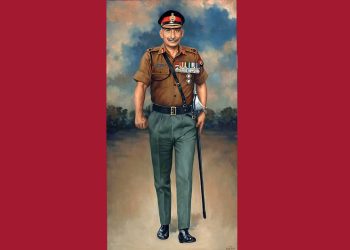Originally published at : https://www.firstpost.com/opinion/plas-achilles-heel-how-indias-professional-army-holds-the-edge-over-chinas-conscript-force-13873139.html
Despite the October 2024 patrolling agreement, India and China are yet to de-escalate at the Line of Actual Control (LAC). As geopolitical tensions simmer into 2025, the question of military preparedness and capability inevitably arises. While much has been said about technological advances and economic might, an often underestimated factor is the stark difference between the composition and experience of soldiers in both armies: India’s all-volunteer professional army against China’s predominantly conscripted force.
Conscription: Quantity at the Expense of Quality?
The Chinese People’s Liberation Army (PLA) is the world’s largest military, with an active strength of nearly two million personnel. Yet, a deeper analysis reveals an inherent structural vulnerability rooted in its reliance on conscription, with conscripts accounting for 35 per cent of the PLA’s total numbers. Annually, thousands of young Chinese are conscripted for a short service period, typically two years. The brief tenure poses serious constraints on training intensity, operational readiness, and institutional memory. Unlike a professional soldier who invests years mastering combat skills, conscripts barely become accustomed to military discipline and basic tactical drills before their discharge.
Historical examples highlight this limitation. During the Sino-Vietnamese conflict of 1979, Chinese conscripts suffered heavy losses against battle-hardened Vietnamese troops who were more familiar with the terrain and warfare. Similarly, PLA commanders during the war were unable to perform the simplest of tasks, including reading a military map. Today, similar challenges exist in high-altitude Himalayan warfare, where physical endurance, tactical acumen, and unit cohesion determine outcomes more than numerical superiority. While it is a fatal mistake to underestimate your primary adversary, it makes military sense to know its weaknesses to leverage it at an opportune time. Our stiff fight during Galwan and the casualties caused on PLA soldiers is an example.
India’s Volunteer Force: Experience as a Force Multiplier
In stark contrast, the Indian Army, a volunteer force of approximately 1.2 million soldiers, invests heavily in its personnel, ensuring long-term professional careers with extensive combat experience. Indian soldiers serve an average of 15-20 years, participating in numerous operations, including counter-insurgency campaigns in Kashmir and Northeast India, deployments along the challenging terrains of the Line of Control (LoC), and the formidable high-altitude battlefield of Siachen Glacier.
Experience in harsh operational environments has instilled unmatched resilience and tactical innovation within Indian ranks. Continuous real-world exposure to asymmetric warfare, urban operations, and prolonged high-altitude deployments translates into an institutional advantage that cannot easily be replicated through brief training cycles. The prolonged service also fosters deep camaraderie, unit cohesion, and operational effectiveness, which conscript armies inherently lack by their transient nature.
Himalayan Battlefield: A Test of Endurance and Experience
The ongoing tensions along the India-China border have already showcased India’s tactical edge. Since the Galwan Valley clash of 2020, the Indian Army has systematically upgraded its capabilities, infrastructure, and logistical networks along the LAC. On the other hand, reports indicate that PLA troops, largely conscripts deployed for rotations of approximately 6-12 months in harsh Himalayan conditions, often face severe challenges, including altitude sickness, psychological stress, and inadequate acclimatisation.
India’s prolonged presence and operational expertise in these challenging conditions are critical. Indian soldiers have decades-long institutional knowledge of Himalayan warfare, lessons absorbed from Operation Meghdoot in Siachen and decades of skirmishes along contested borders. Such knowledge isn’t merely academic; it translates directly into tactical advantages, enabling swift adaptation to changing battlefield conditions.
Morale and Motivation: The Silent Battle-Winners
Another critical yet less-discussed factor is morale. Volunteer soldiers, driven by personal commitment and pride in service, exhibit consistently high morale. In contrast, conscripts often view compulsory military service as temporary, an obligation rather than a vocation. Numerous studies indicate that conscript armies frequently grapple with motivational challenges, which manifest particularly during prolonged deployments or intense combat scenarios. The PLA has recognised this issue internally, as evidenced by recent attempts to professionalise certain elite units.
However, broader transformation remains elusive as deep-rooted systemic reliance on conscription continues. Furthermore, cultural and socioeconomic factors in China significantly influence conscription practices, often diluting the quality and motivation of conscripts to enter service. Their problems get further compounded by the aging population, with the median age at 39.9. The youth of China today are also burdened by the responsibilities of looking after their aging parents and grandparents. These challenges further bring down the morale and motivation of a PLA soldier.
PLA’s Technological Reliance: Compensating for Experience?
China’s response to inherent manpower challenges has been extensive investment in technology and modernisation programs, focusing heavily on autonomous systems, drones, and cyber capabilities. Yet, technological prowess alone cannot replace battle-tested human judgment and adaptability, qualities forged under sustained, rigorous training and real combat experience. Indian forces, while also modernising rapidly, maintain a deliberate balance between technological advancements and human resource investment. India’s recent induction of sophisticated equipment, ranging from artillery systems to surveillance drones, complements rather than substitutes the professional acumen of its soldiers. We can overcome our technological asymmetry through a strategy of building smart power and collaborative approach.
Future Implications: Strategic Calculations and Risks
Strategically, the PLA’s reliance on conscripts has significant implications. It forces Chinese military planners to rely disproportionately on technological superiority and rapid initial gains, knowing prolonged engagements inherently disadvantage their conscript-heavy formations. This creates a strategic vulnerability India can exploit, using attrition warfare and sustained defensive operations to leverage its professional soldiers’ superior endurance, adaptability, and experience.
For policymakers and military strategists in India, understanding this fundamental weakness in PLA composition offers opportunities to shape defensive strategies effectively, ensuring robust deterrence and reducing escalation risks. The PLA, on the other hand, faces a crucial decision: persisting with the current conscription-heavy model or transitioning towards greater professionalisation, a shift laden with political, social, and economic challenges.
Professional Edge
Ultimately, warfare, especially in unforgiving Himalayan terrain, is determined not just by technological advancement or sheer numbers but by the caliber, resilience, and commitment of individual soldiers. India’s volunteer, professional army, steeped in combat experience, morale, and institutional knowledge, stands poised to leverage a clear advantage over the PLA’s conscript-based forces. As tensions persist into 2025 and beyond, this qualitative advantage will remain India’s most potent deterrent along its disputed borders, a silent yet formidable assurance of national security in the face of a quantitatively superior adversary.














